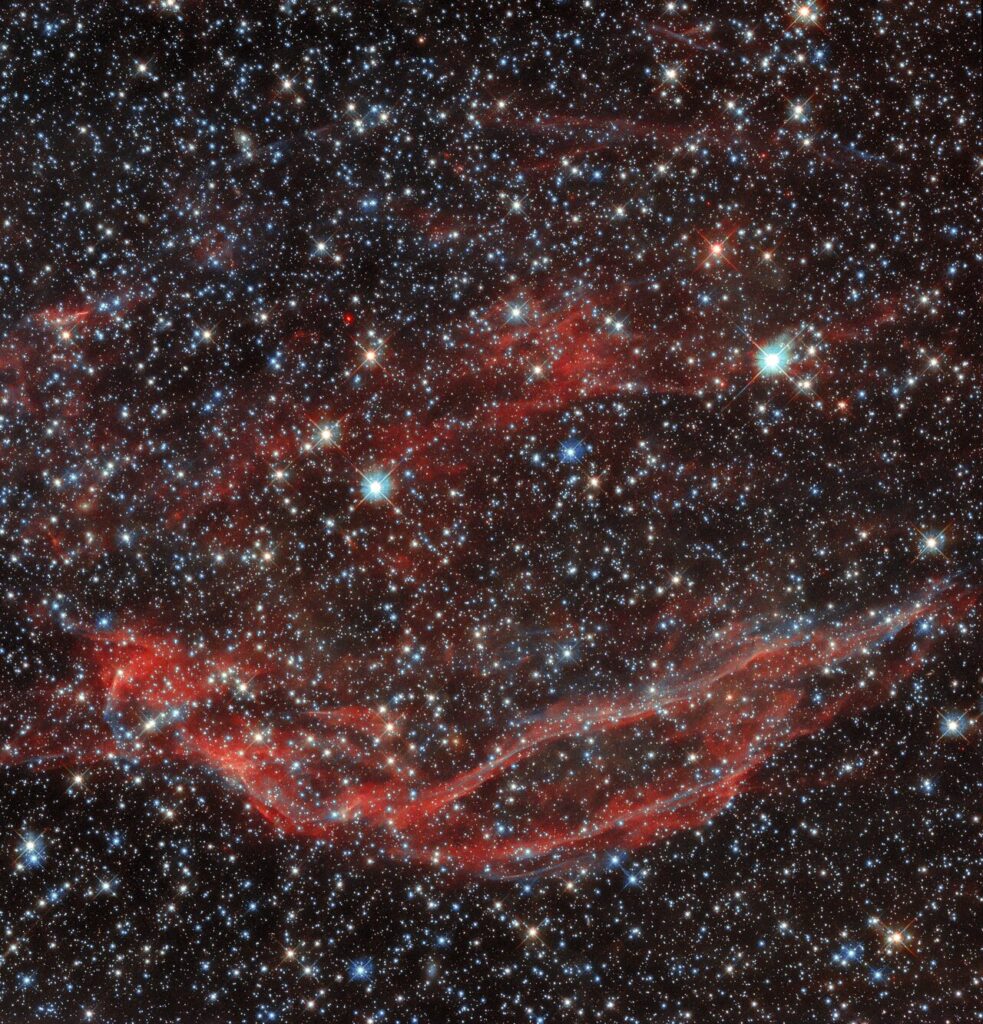The presented image was published on the Hubble mission website. The image shows thin gas structures known under the designation DEM L249. They are located in the Large Magellanic Cloud, a moon galaxy of the Milky Way, located at a distance of 160 thousand light years from Earth.

DEM L249 is all that remains of a supernova outbreak, one of the most destructive events in the Universe. During its course, more energy is released than a star like our Sun produces in its entire life. According to astronomers, DEM L249 was formed as a result of a type Ia supernova outbreak. As a rule, their source is white dwarfs in binary systems, gradually pulling over the matter of their companion. As soon as the mass of the white dwarf exceeds the Chandrasekhar limit (approximately 1.4 times the mass of the Sun), this leads to its thermonuclear explosion. The matter enriched with heavy elements is released into the surrounding space. Over time, it can become part of gas clouds and become part of the “building material” for new stars and planets.
Since approximately the same amount of energy is released during type Ia supernova explosions, astronomers use them as “standard candles” to determine distances to far galaxies, as well as calibrate other methods for determining distances in the Universe.
Astronomers have long used the Large Magellanic Cloud as a natural laboratory for studying supernovae. This is due to its relative proximity to Earth, as well as the absence of interstellar dust complicating observations (because of it, we cannot see the center of the Milky Way in the visible range). It was in the Large Magellanic Cloud in 1987 that the famous supernova outbreak SN 1987A occurred. It was the first flare since the invention of the telescope, which could be observed in the earth’s sky with the naked eye.
According to https://esahubble.org
Follow us on Twitter to get the most interesting space news in time
https://twitter.com/ust_magazine
